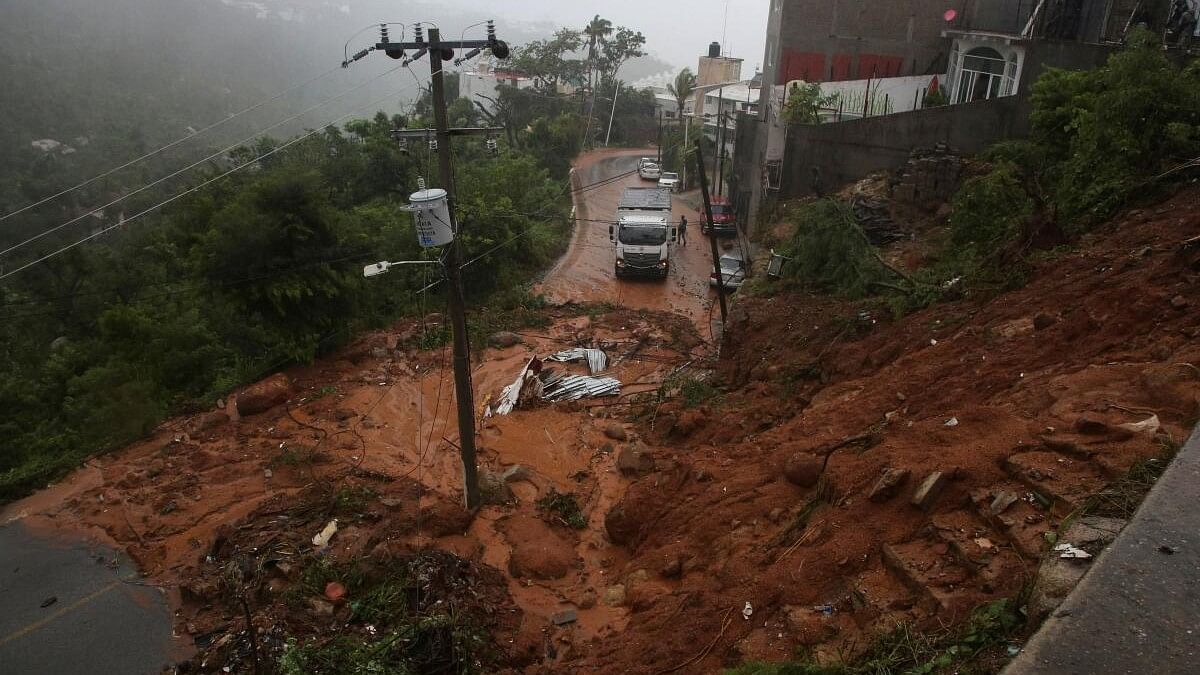
A general view shows a mudslide caused by Hurricane John, in Acapulco, Mexico.
Credit: Reuters Photo
Mexico City: Hurricane John strengthened once again on Thursday as it hurled rain at Mexico's southwestern coast dotted with ports and tourist hotspots, an area already soaked by the slow-moving storm system over the past several days.
John has churned menacingly near the stretch of coastline since Monday, weakening and strengthening again as it impacted major cargo ports, temporarily shutting local airports as well as claiming at least five lives, mostly due to mudslides.
AccuWeather meteorologist Jesse Ferrell referred to John as a "zombie" storm - a term that refers to systems that dissipate before strengthening back into a storm, first coined by the US National Weather Service in 2020 when the remnants of storm Paulette regenerated near the Azores after striking Bermuda.
In 2004, Hurricane Ivan, which lasted close to an entire month, smashed the Caribbean before dissipating and coming back to life to strike the United States. Ivan caused some $26 billion in damages for that year.
Christopher Rozoff, atmospheric scientist at the National Center for Atmospheric Research, said John was slow-moving and had no large-scale steering forces moving it elsewhere.
This, Rozoff said, made it "prone to take a disastrous path back over sea to reintensify and further torment the Mexican coast with extreme rainfall."
John was hurling rain across the Mexican state of Guerrero on Thursday, after already hitting the state earlier in the week in a strike that uprooted trees, knocked out power to tens of thousands and triggered deadly landslides that crushed houses.
Guerrero state Governor Evelyn Salgado on Thursday morning urged residents to take all precautions, a day after a rising tide battered beach-front restaurants in Acapulco, one of the state's top resort areas, and rains flooded nearby roads.
Acapulco is still recovering from major destruction caused by Hurricane Otis last year.
After crawling northwest, John was stationary 55 miles (89 km) southwest of the major cargo port of Lazaro Cardenas, packing maximum sustained winds of 75 miles per hour (121 kph), according to the US National Hurricane Center.
The Miami-based center expects the hurricane to skirt Mexico's southwest coast, along Michoacan, Guerrero and Oaxaca states, further drenching the area through at least Saturday.
"This heavy rainfall will likely cause significant and catastrophic life-threatening flash flooding and mudslides," it warned.
AccuWeather lead hurricane expert Alex DaSilva said that both John and Otis had strengthened rapidly due to the warm sea temperatures, with some areas where John developed nearing 32 degrees Celsius (90 degrees Fahrenheit), providing storms with more fuel.
Rowan University meteorologist Andra Garner said the warm waters had likely helped John reform after its first landfall.
Moving into the future, added DaSilva, it is "very likely" we will see warmer sea surface temperatures, which "could lead to more episodes of rapid intensification as we look ahead."